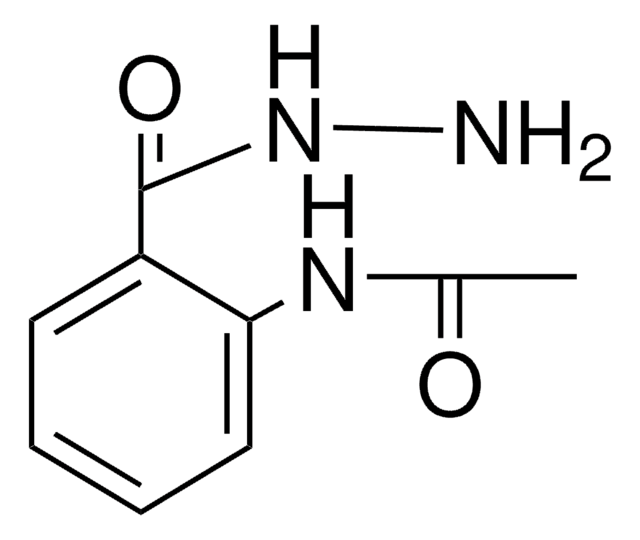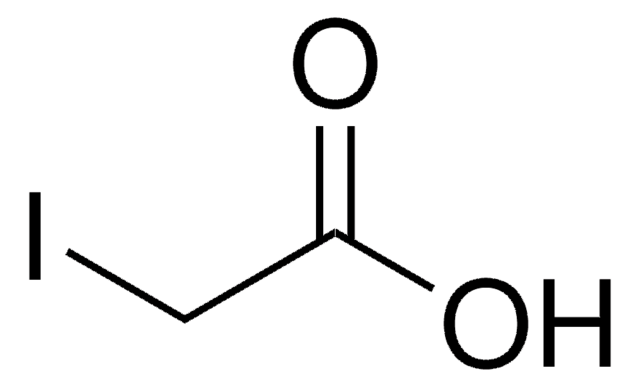10680
Anthranilic acid
puriss. p.a., ≥99.5% (T)
Synonyme(s) :
2-AA, 2-Aminobenzoic acid
About This Item
Produits recommandés
Densité de vapeur
4.7 (vs air)
Niveau de qualité
Qualité
puriss. p.a.
Pureté
≥99.5% (T)
Forme
solid
Résidus de calcination
≤0.05% (as SO4)
Pf
144-148 °C (lit.)
145-147 °C
Traces d'anions
chloride (Cl-): ≤500 mg/kg
sulfate (SO42-): ≤100 mg/kg
Traces de cations
Ca: ≤100 mg/kg
Cd: ≤5 mg/kg
Co: ≤5 mg/kg
Cr: ≤5 mg/kg
Cu: ≤5 mg/kg
Fe: ≤5 mg/kg
K: ≤50 mg/kg
Mg: ≤5 mg/kg
Mn: ≤5 mg/kg
Na: ≤50 mg/kg
Ni: ≤5 mg/kg
Pb: ≤5 mg/kg
Zn: ≤5 mg/kg
Chaîne SMILES
Nc1ccccc1C(O)=O
InChI
1S/C7H7NO2/c8-6-4-2-1-3-5(6)7(9)10/h1-4H,8H2,(H,9,10)
Clé InChI
RWZYAGGXGHYGMB-UHFFFAOYSA-N
Vous recherchez des produits similaires ? Visite Guide de comparaison des produits
Catégories apparentées
Description générale
Application
- Fluorescent labeling of glycans.
- Synthesis of triptycene and derivatives, via diazotization reaction.
- As fluorescent label for the facile labeling of oligosaccharides (acidic and neutral).
- As fluorescent label for carbohydrate analysis.
- Derivatization of oligosaccharides.
- Preparation of poly(aniline-co-o-anthranilic acid) copolymers.
Autres remarques
Produit(s) apparenté(s)
Mention d'avertissement
Danger
Mentions de danger
Conseils de prudence
Classification des risques
Eye Dam. 1
Code de la classe de stockage
11 - Combustible Solids
Classe de danger pour l'eau (WGK)
WGK 1
Point d'éclair (°F)
302.0 °F - closed cup
Point d'éclair (°C)
150 °C - closed cup
Équipement de protection individuelle
dust mask type N95 (US), Eyeshields, Faceshields, Gloves
Faites votre choix parmi les versions les plus récentes :
Déjà en possession de ce produit ?
Retrouvez la documentation relative aux produits que vous avez récemment achetés dans la Bibliothèque de documents.
2-heptyl-3-hydroxy-4 (1H)-quinolone and structurally related analogs"
Notre équipe de scientifiques dispose d'une expérience dans tous les secteurs de la recherche, notamment en sciences de la vie, science des matériaux, synthèse chimique, chromatographie, analyse et dans de nombreux autres domaines..
Contacter notre Service technique









